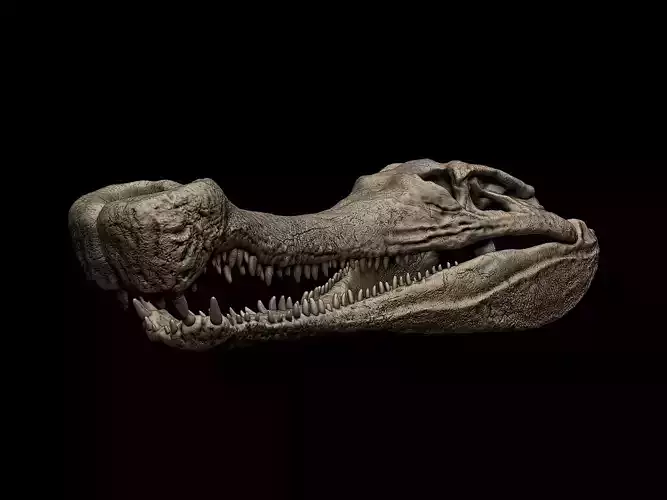1/8
This is a life size 3d digital model skull of a Sarcosuchus. OBJ, ZTL, PLY, FBX and STL files. jaw is seperated.
Sarcosuchus, meaning flesh, meaning crocodile, is an extinct genus of crocodyliform that lived during the Early Cretaceous, from the late Hauterivian to the early Albian stages, 130 to 112 million years ago of what is now Africa and South America. It was one of the largest pseudosuchians, with the largest specimen of S. imperator reaching approximately 9–9.5 metres (29.5–31.2 ft) long and weighing up to 3.45–4.3 metric tons (3.80–4.74 short tons). It is known from two species; S. imperator from the early Albian Elrhaz Formation of Niger, and S. hartti from the Late Hauterivian of northeastern Brazil. Other material is known from Morocco and Tunisia and possibly Libya and Mali.
The first remains were discovered during several expeditions led by the French paleontologist Albert-Félix de Lapparent, spanning from 1946 to 1959, in the Sahara. These remains were fragments of the skull, vertebrae, teeth, and scutes. In 1964, an almost complete skull was found in Niger by the French CEA, but it was not until 1997 and 2000 that most of its anatomy became known to science, when an expedition led by the American paleontologist Paul Sereno discovered six new specimens, including one with about half the skeleton intact including most of the spine.
REVIEWS & COMMENTS
accuracy, and usability.








